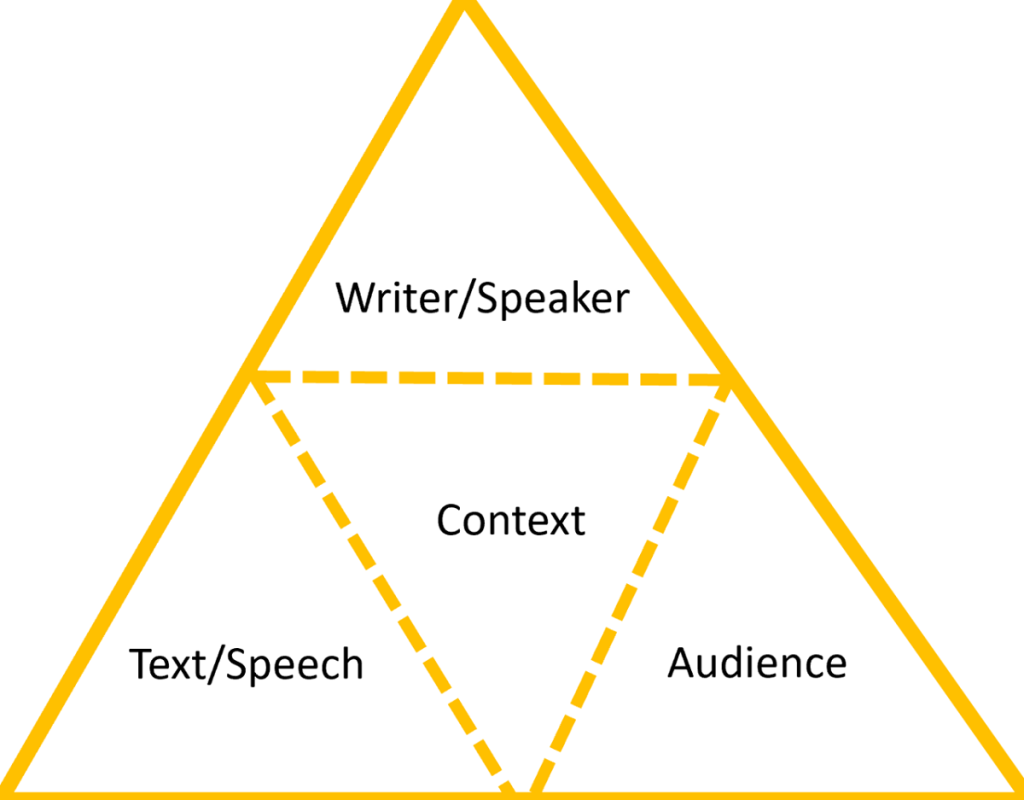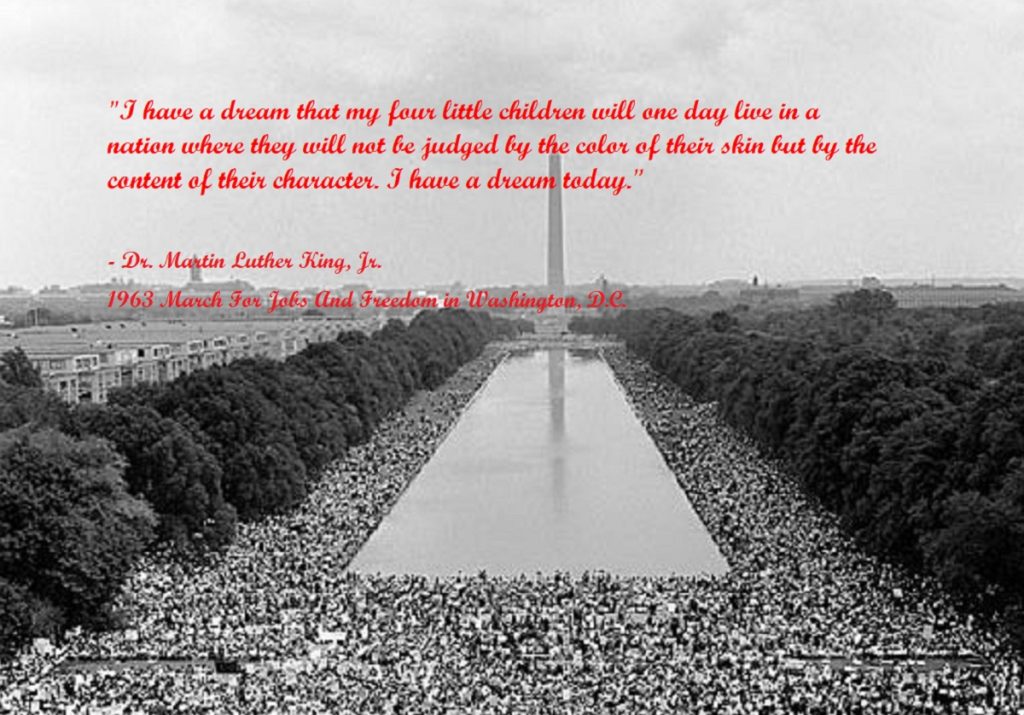A rhetorical device is a verbal technique a speaker or writer uses to make their presentation more compelling to the audience so that listeners are persuaded to accept their position. They can evoke an emotional response, although this is not the main reason why the speaker chooses the device.
Rhetoric is the art of using language to persuade, inform, or entertain an audience. It has been studied and practiced for thousands of years and has produced a variety of techniques and devices that speakers and writers use to achieve their goals.
One such device is the rhetorical device, a technique that creates a memorable and effective message. Rhetorical devices include figures of speech, such as similes and metaphors, as well as techniques like repetition and parallelism.
This article explores the different types of rhetorical devices and how they can be used in written and spoken communication to enhance the impact of a message.
What Is A Rhetorical Device?
A speaker or writer uses a rhetorical device to convey meaning and persuade their audience. These devices can include figures of speech, such as metaphors and similes, as well as techniques like repetition and parallelism.
The purpose of rhetorical devices is to make language more memorable, persuasive, or entertaining. Using these techniques effectively, a speaker or writer can create a more impactful message that resonates with their audience.

How Does This Compare With A Literary Device?
Rhetorical devices focus primarily on persuasion and communication, while literary devices create artistic effects in literature. They are straightforward and often used in non-fiction writing and speeches, while literary devices are more commonly used in fiction, poetry, and drama.
Literary devices may be more subtle and complex. Some literary devices include allegory, symbolism, and imagery, while rhetorical devices center around the use of words.
What Are The Four Modes Of Persuasion Aided by Rhetorical Devices?
The four modes of persuasion, also known as the rhetorical appeals, are ethos, logos, pathos, and kairos. These modes are aided by various rhetorical devices to create a persuasive message.
- Ethos appeals to the audience’s sense of ethics and credibility. Rhetorical devices that aid ethos include using expert testimony, presenting a speaker’s or writer’s credentials, and establishing trustworthiness.
- Logos appeals to the audience’s logic and reasoning. Examples of logos include statistics and facts, logical arguments, analogies, and illustrations.
- Pathos appeals to the audience’s emotions. Pathos uses vivid imagery, personal stories, and figurative language to create an emotional impact.
- Kairos appeals to the timing and context of the message. It would use current events and news stories to make a persuasive case, as well as timing and urgency to make the audience feel compelled to act.

Aristotle’s Setup
Aristotle’s Setup, also known as Aristotle’s dramatic or narrative arc, is a structure used in storytelling first described by the Greek philosopher Aristotle in his work “Poetics.” The system consists of three parts: the beginning or exposition, the middle or complication, and the end or resolution.
The beginning or exposition sets the stage for the story by introducing the characters, setting, and conflict. The middle or complication builds tension and develops the competition through rising action, leading to a climax or turning point. The end or resolution resolves the conflict and ties up loose ends.
Aristotle’s Setup is still used today as a framework for storytelling in various forms of media, including literature, film, and television. It provides a clear structure for creating a compelling narrative that engages the audience and keeps them invested in the story.
How Do A Rhetorical Device And A Rhetorical Technique Differ?
A rhetorical device is a specific technique a speaker or writer uses to create a particular effect, such as a metaphor or repetition. It is a specific tool in the writer or speaker’s toolbox that achieves a particular goal.
Rhetorical technique, on the other hand, refers to the strategies and methods a speaker or writer employs to persuade or communicate effectively. It encompasses a broader range of tools and techniques, including rhetorical devices.
In other words, rhetorical technique is the larger umbrella under which rhetorical devices fall. Rhetorical devices are specific examples of the techniques used in rhetoric, but they only encompass a partial range of strategies used to communicate effectively.
What is A Rhetorical Strategy
Here are 10 examples of rhetorical strategies:
- Appeal to emotion: “Don’t you want to keep your family safe?”
- Appeal to authority: “As the leading expert in this field, I can tell you that this product is the best.”
- Call to action: “Join our cause and help make a difference in the world!”
- Comparison and contrast: “This product is not only more effective but also more affordable than our competitors.”
- Testimonial: “I tried this product, and it completely changed my life.”
- Cause and effect: “If we don’t take action now, the consequences will be catastrophic.”
- Humor: “Why did the tomato turn red? Because it saw the salad dressing!”
- Narration: “Let me tell you a story about how this product changed my life.”
- Logical appeal: “Based on the evidence presented, it’s clear that this is the best choice.”
- Storytelling: “Once upon a time, a young girl dreamed of changing the world.”

What Are The Most Common Rhetorical Devices?
Rhetorical Devices are powerful tools that add emphasis, clarity, and emotion to written and spoken language. From the time of Shakespeare to the famous speeches of John F. Kennedy, rhetorical devices have played a crucial part in shaping the way we communicate.
Ten examples of rhetorical devices are as follows:
- Metaphor – using a comparison to make a point or create an image in the audience’s mind
- Simile – the comparison of two things using “like” or “as” to create a vivid picture.
- Alliteration – the repetition of the same sound at the beginning of multiple words in a phrase or sentence to create rhythm and emphasis.
- Hyperbole – using exaggeration to create a dramatic effect or to emphasize a point.
- Personification – attributing human qualities or actions to non-human objects or ideas to make a point or create a vivid image.
- Irony – using language to convey the opposite of its literal meaning for humorous or dramatic effect.
- Repetition – the most commonly used device involves repeating a word or phrase to create emphasis or to reinforce a point.
- Onomatopoeia – using words that imitate the sound they represent to create a vivid image.
- Oxymoron – using two contradictory words together to create a paradoxical effect.
- Rhetorical question – asking a question to make a point or to emphasize a message without expecting a direct answer.
Consonant sounds can also be emphasized through devices like consonance and alliteration. Metonymy and synecdoche are two devices that involve substituting one word or phrase for another, with the former using a related term and the latter using a part to represent the whole.
Which Rhetorical Device Is Most Often Used In Speeches?
The most commonly used rhetorical device in a speech is repetition.
Anaphora involves repeating a word or phrase at the beginning of successive clauses or sentences. This can create a rhythmic effect and draw attention to the repeated phrase. John F. Kennedy’s famous line, “Ask not what your country can do for you, ask what you can do for your country,” is a great example of anaphora.

Another device is chiasmus, which involves repeating words or ideas in reverse order. For example, “Do not let your schooling interfere with your education” is a famous quote by Mark Twain that uses chiasmus.
Repetition of a word or phrase can be used to reinforce a point or idea and can be seen in famous speeches like Martin Luther King Jr.’s “I Have a Dream” speech. As seen in Yoda’s unique speech pattern, sentence structure and syntax can also be manipulated for emphasis.

